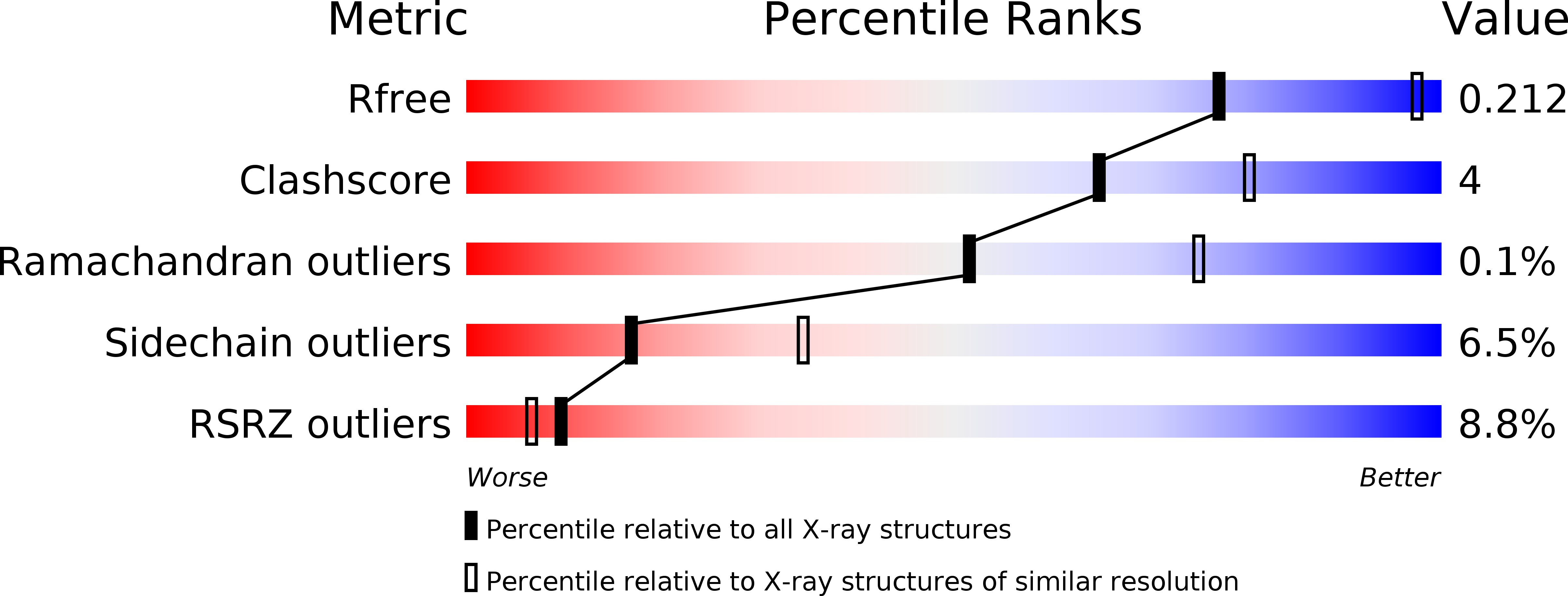
Deposition Date
2009-12-01
Release Date
2010-02-16
Last Version Date
2024-11-13
Entry Detail
PDB ID:
2WZP
Keywords:
Title:
Structures of Lactococcal Phage p2 Baseplate Shed Light on a Novel Mechanism of Host Attachment and Activation in Siphoviridae
Biological Source:
Source Organism:
LACTOCOCCUS PHAGE P2 (Taxon ID: 254252)
LAMA GLAMA (Taxon ID: 9844)
LAMA GLAMA (Taxon ID: 9844)
Host Organism:
Method Details:
Experimental Method:
Resolution:
2.60 Å
R-Value Free:
0.20
R-Value Work:
0.17
R-Value Observed:
0.17
Space Group:
H 3 2


